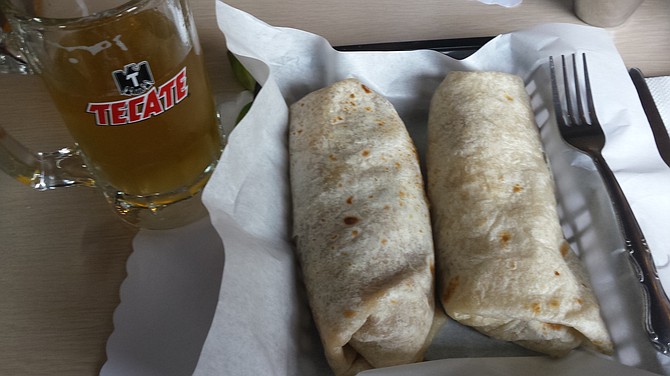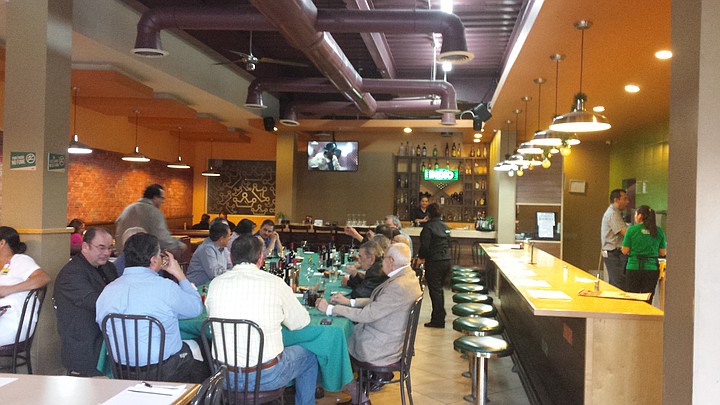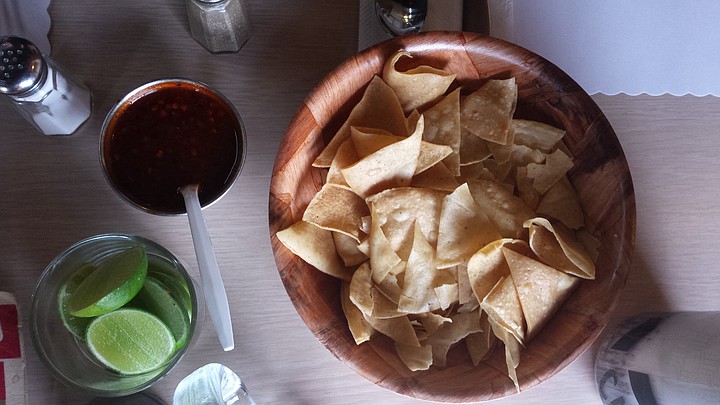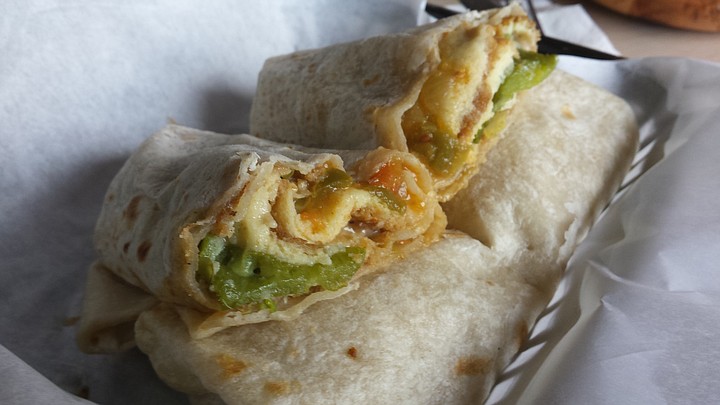 Facebook
Facebook
 X
X
 Instagram
Instagram
 TikTok
TikTok
 Youtube
Youtube

http://www.bolcoron…">Bol Corona
Avenida Ocampo between Tercera and Cuarta, Centro, Tijuana

San Diegans are often surprised to discover that our beloved, bulky, bountiful burritos are nowhere to be found in Tijuana. In fact, the Northern Mexico norm is the Ciudad Juárez-style burrito: small, thin, and simple, containing a couple of ingredients at the most. And while burritos have likely been in existence in one form or another since Mesoamericans started making tortillas around 12,000 years ago, it’s only in the last half-century or so that they’ve come to resemble the overstuffed monuments made popular in San Francisco, Los Angeles, and San Diego.
The typical Tijuana ‘rito, while tasty, is hardly a full meal on its own. But, not bound by tradition, Bol Corona has found the sweet spot between Juarez pinners and California bellyaches. Now a well-known TJ chain, the restaurant dates back to 1934. Club Corona bowling alley and cantina opened on Revolución around the time that El Cholo Spanish Café in Los Angeles became the first stateside restaurant to offer burritos.

In 1952, a couple of decades before burritios would rise to prominence in the U.S., Club Corona renovated their menu to feature burritos as the main dish and installed Mexico’s first automated bowling lanes. 20 years later, they would open their second branch down the street on Agua Caliente. Meanwhile, in San Diego, Roberto Robledo would open his first Roberto’s taco shop, setting precedent for the San Diego-style burrito and inspiring a surge of -berto’s knockoffs that pepper the city to this day.

Now entering their 81st year, Bol Corona has 7 locations throughout the city specializing in atypically hefty but classically unassuming burritos. For our purposes, it’s all about the frijol con queso (bean and cheese, 32 pesos or about $2.20 USD) and the chile relleno (41 pesos/$2.80 USD) ‘ritos. It would be wrong to say that there is anything particularly mind-blowing about either of these items. There is not. Their elegance lies in their simplicity and their just-so dimensions. And that alone merits the place a visit.


http://www.bolcoron…">Bol Corona
Avenida Ocampo between Tercera and Cuarta, Centro, Tijuana

San Diegans are often surprised to discover that our beloved, bulky, bountiful burritos are nowhere to be found in Tijuana. In fact, the Northern Mexico norm is the Ciudad Juárez-style burrito: small, thin, and simple, containing a couple of ingredients at the most. And while burritos have likely been in existence in one form or another since Mesoamericans started making tortillas around 12,000 years ago, it’s only in the last half-century or so that they’ve come to resemble the overstuffed monuments made popular in San Francisco, Los Angeles, and San Diego.
The typical Tijuana ‘rito, while tasty, is hardly a full meal on its own. But, not bound by tradition, Bol Corona has found the sweet spot between Juarez pinners and California bellyaches. Now a well-known TJ chain, the restaurant dates back to 1934. Club Corona bowling alley and cantina opened on Revolución around the time that El Cholo Spanish Café in Los Angeles became the first stateside restaurant to offer burritos.

In 1952, a couple of decades before burritios would rise to prominence in the U.S., Club Corona renovated their menu to feature burritos as the main dish and installed Mexico’s first automated bowling lanes. 20 years later, they would open their second branch down the street on Agua Caliente. Meanwhile, in San Diego, Roberto Robledo would open his first Roberto’s taco shop, setting precedent for the San Diego-style burrito and inspiring a surge of -berto’s knockoffs that pepper the city to this day.

Now entering their 81st year, Bol Corona has 7 locations throughout the city specializing in atypically hefty but classically unassuming burritos. For our purposes, it’s all about the frijol con queso (bean and cheese, 32 pesos or about $2.20 USD) and the chile relleno (41 pesos/$2.80 USD) ‘ritos. It would be wrong to say that there is anything particularly mind-blowing about either of these items. There is not. Their elegance lies in their simplicity and their just-so dimensions. And that alone merits the place a visit.
Comments